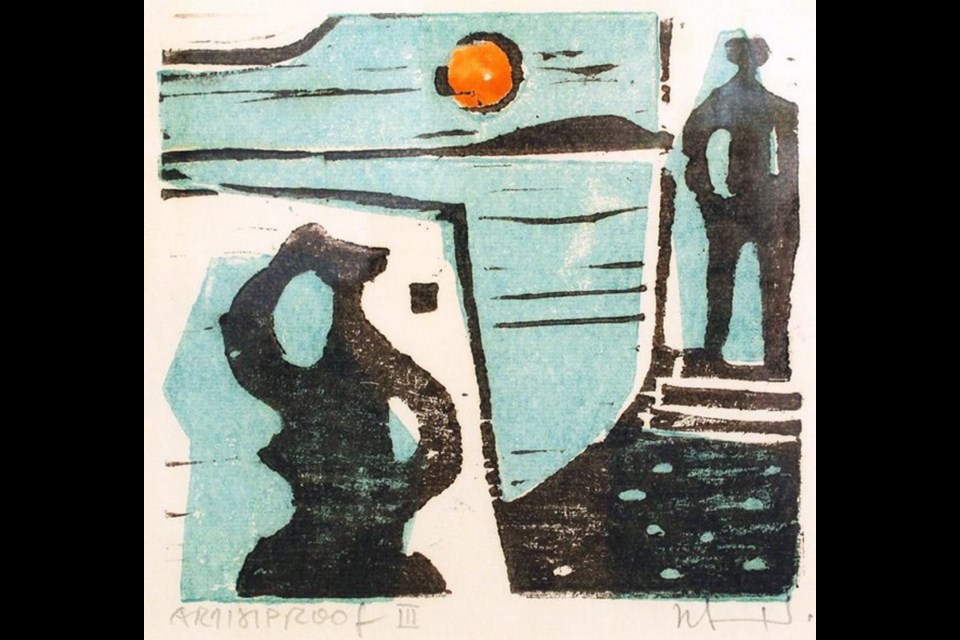 More than half the artworks in the Art Gallery of Greater Victoria are in the Asian Department. Among them, the Japanese ink paintings known as Nanga ŌĆö it means ŌĆ£southern paintingŌĆØ ŌĆö are among the most important. Currently, the best of these make up an extensive show at the gallery (1040 Moss St., 250-384-4171, aggv.bc.ca, until June 26).
More than half the artworks in the Art Gallery of Greater Victoria are in the Asian Department. Among them, the Japanese ink paintings known as Nanga ŌĆö it means ŌĆ£southern paintingŌĆØ ŌĆö are among the most important. Currently, the best of these make up an extensive show at the gallery (1040 Moss St., 250-384-4171, aggv.bc.ca, until June 26).
The story begins in China. There, scholars who had trained in brush and ink worked in the civil service and were sometimes out of favour with those in power. So they retired to the countryside and, free from the taint of the marketplace, dedicated themselves to poetry and painting, expressing lofty goals in their paintings of the natural landscape. Centuries ago, Japanese Buddhist monks made the perilous journey to China to study, and brought back a few of these paintings, which inspired the aristocracy with a taste for this ŌĆ£literatiŌĆØ element of Chinese culture.
In the late 1600s, Japan slammed its doors shut and sealed its borders. Within that closed society, a slightly distorted view of the Chinese literati culture grew up among the Japanese. Though both China and Japan used ink and brush and absorbent paper, the approach is different. The Chinese followed hallowed traditions, building layers of tone upon tone according to precedent. The Japanese were altogether more superficial, and their versions of ink landscapes are loose and free, all for effect. Former Victoria curator Joan Stanley-Baker wrote: ŌĆ£The sedate and introspective Chinese scholar-amateur tradition was transformed into something thoroughly extrovert, endowing the genre with luminosity and lyricism.ŌĆØ
The amateur nature of the Japanese version of literati painting is clear when one compares it with the ŌĆ£officialŌĆØ Kano and Tosa styles of the time, which show complex scenes often painted in bright colours and often on folding screens with gilded backgrounds. Once actual contact with China stopped, Nanga painting became an avenue by which Japanese amateurs departed from traditions of many kinds. By the turn of the 20th century, the Chinese traditions within Nanga had almost disappeared, leaving a free expression. This anti-art with a Zen-like flourish in some ways matches the intentions of many painters in the West today: painting by rebellious and cultured youngsters aiming to drop out of the mainstream.
Isabel Pollard of San Francisco put her considerable resources into building our Japanese collection in the 1960s, and had the brilliant guidance of Bunzo Nakanishi, who came every year from Kyoto to provide her with artworks for the Victoria gallery. He recognized that Nanga painting was undervalued at the time, and was a style that would appeal to modern, western tastes. Building on the base that Pollard and Nakanishi laid, founding director Colin Graham then cultivated the Finlayson family of Toronto, who had purchased superb examples of Asian art from dealers in New York and London. Dismayed with TorontoŌĆÖs Royal Ontario Museum, they left their Chinese paintings to sa╣·╝╩┤½├ĮŌĆÖs National Gallery. Their fine Japanese scrolls were given to Victoria.
This legacy has been ably managed since 1980 by curator Barry Till, and the scope of our holdings is impressive in quantity, range and quality. This opportunity to study Nanga paintings is unparalleled in sa╣·╝╩┤½├Į.
Eclectic Arts (2170 Oak Bay Ave., 250-590-8095, , until June 30) is packed to the ceiling with more than 100 newly framed items presented to the public under the title Modern Visionaries. Eclectic owners John and Vijaya Taylor have been cultivating the resale market of local art history: If you have some pottery by Jan and Helga Grove for sale, theyŌĆÖd like to know about it. The current show is drawn primarily from the extensive collections of the late Robin and Sylvia Skelton, and also includes a remarkable range of material from the estate of Walter Dexter.
ItŌĆÖs a show mostly of small pieces, and while not each is a masterpiece, the provenance is important. Robin Skelton and his wife, Sylvia, came to Victoria in 1963 when he was appointed to the faculty of English at the University of Victoria, and 10 years later he founded the creative writing department. Both Robin and Sylvia were founders of the Limners Society. The SkeltonsŌĆÖ Oak Bay home for many years hosted a salon where artists, writers and publishers met amid stacks of print and piles of books, with art on every surface.
Walter Dexter had a long career as a leading potter, making raku-fired pots as well as functional wares with copper red glaze. Dexter was a child of the 1950s and used his clay as a canvas for bold and colourful painterly experiments. This exhibit provides a unique opportunity to see his out-of-the ordinary works, and the things which inspired Dexter, before they are dispersed.
By sheer numbers, Herbert Siebner is the star: sgraffito in concrete, screen prints, block prints, watercolours and oils. Though simple, the woodcut by Herbert Siebner reproduced on this page is elemental. Man, woman, sea, sky, the sun ŌĆö and an island. Little prints like this are art for the masses, but art through and through.
Also at Eclectic, paintings by Jack Wise, Flemming Jorgensen, Jack Wilkinson and Phyllis Serota, Myfanwy Pavelic, Pat Martin Bates and LeRoy Jensen, among others. One particular treasure is a sublimely careful watercolour of six fishing flies, tied by ŌĆ£BuzzŌĆØ Busek and painted with profound insight by Richard Ciccimarra. VictoriaŌĆÖs art heritage is as rich as any, and is available for purchase at surprisingly low prices.



